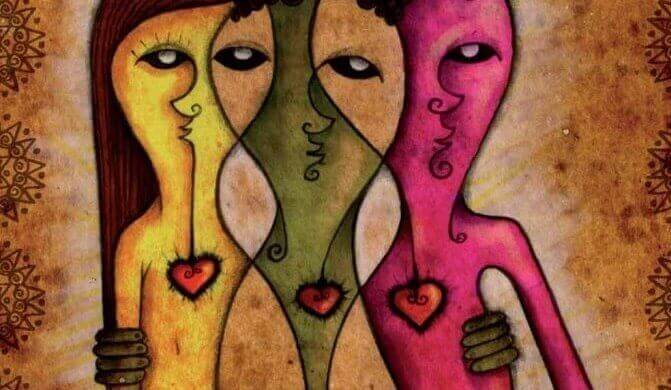Many people believe that myths about polyamor are not myths, but a reality; however, when you look at research showing that up to 5% of the U. S. population has non-monogamous relationships, an effort must still be made to find clear answers to certain questions.
Oscar Wilde said “loving oneself is the beginning of a lifelong adventure. “Is it possible to share this love with more than one person and have a similar nature to that shared with a partner, not a brother or mother?Is polyamor itself a myth, the greatest of all around us?Let’s take a look.
- “I’ve tried everything and I can assure you that there’s nothing better than being in your loved one’s arms.
- -John Lennon-.
As we said at the beginning, it seems that many of the ideas that in one way or another prevail in the conscious and collective unconscious over polyamor are, in fact, myths, in recent years voices like dr. Eric Anderson, who claims that monogamy in humans is not natural and is simply a cultural norm.
Once the topic is exposed, we will dismantle some myths, this is the case of those who claim that those who practice polyamor have a main partner and then have other relationships outside the couple.
For psychologist Bjarne Holmes, it’s a myth. According to his research, this fact is only true in 30% of the relationships between three or more people. In fact, in most groups there is usually no marked hierarchy: primary love versus secondary love.
Another myth, at least says Judith Eve Lipton and David P. Barash. After several studies on this subject, they argue that human nature is not monogamous, quite the opposite.
These two scientists understand that human beings go against the laws of biology, we seem endowed, like many creatures, with being polygamous, but we try to maintain an exclusive social bond between man and woman, although this is not our true evolutionary inclination. .
Another of the myths of polyamor that psychologists deny, as is the case with Melissa Mitchell, in fact, this psychologist believes that this is an unfounded prejudice, at least that’s what you see in your studies.
Finding a second or third partner has nothing to do with dissatisfaction with a first partner, in fact, in general, these types of relationships are quite independent from each other.
We will rebut another myth about polyamor, in this case, if we follow the teachings of Tristan Taormino, he argues that a polygamous relationship should not be more or less dysfunctional than the monogamous relationship. For such a statement, it is based on research that includes standard psychological testing.
In fact, studies show that a person who tends to build relationships is generally more creative and less conformist, that is, he is someone who is stimulated by complexity, inventiveness, the unconventional and chaos, but who does not present psychological problems.
A new myth of polyamor that can be easily refuted, many consider that this type of relationship particularly harms children, which will not develop properly.
In this case, Professor Elizabet Sheff interviewed children raised in families who practice polyamor and are between 5 and 17 years old. Result? Against the myth, he found advantages. Adults have more help caring for children and children still have an older person to share the game with and concerns.
Once again, we address the thesis of Tristan Taormino, who believes that a non-monogamous person is not confused or afraid of commitment, in fact, on the contrary, in general he knows very well what he wants and how he wants it.
Another myth Taormino denies in his work. In this case, related to promiscuity, however, he says that a sexually active life with two or more people is actually nothing negative.
After reading this, do you still believe in the myths about polyamor?Science itself is gradually reversing old beliefs or at least opening up an interesting debate with arguments to consider. The reality is that many scientists say there are strong reasons to believe that we are able to love more than one person.
“All we know about love is that love is all there is. -Emily Dickinson-

